- Home
- Information
- Articles
Zeiss Ikon Contax Camera Repair
A home for your Zeiss Ikon Contax, Contarex or Super Ikonta camera!
Index
The New Limited Edition Sonnar ZM For Contax and Nikon
Here is a set of front, side and rear views of this very special lens inadvertently made for the Contax Camera.
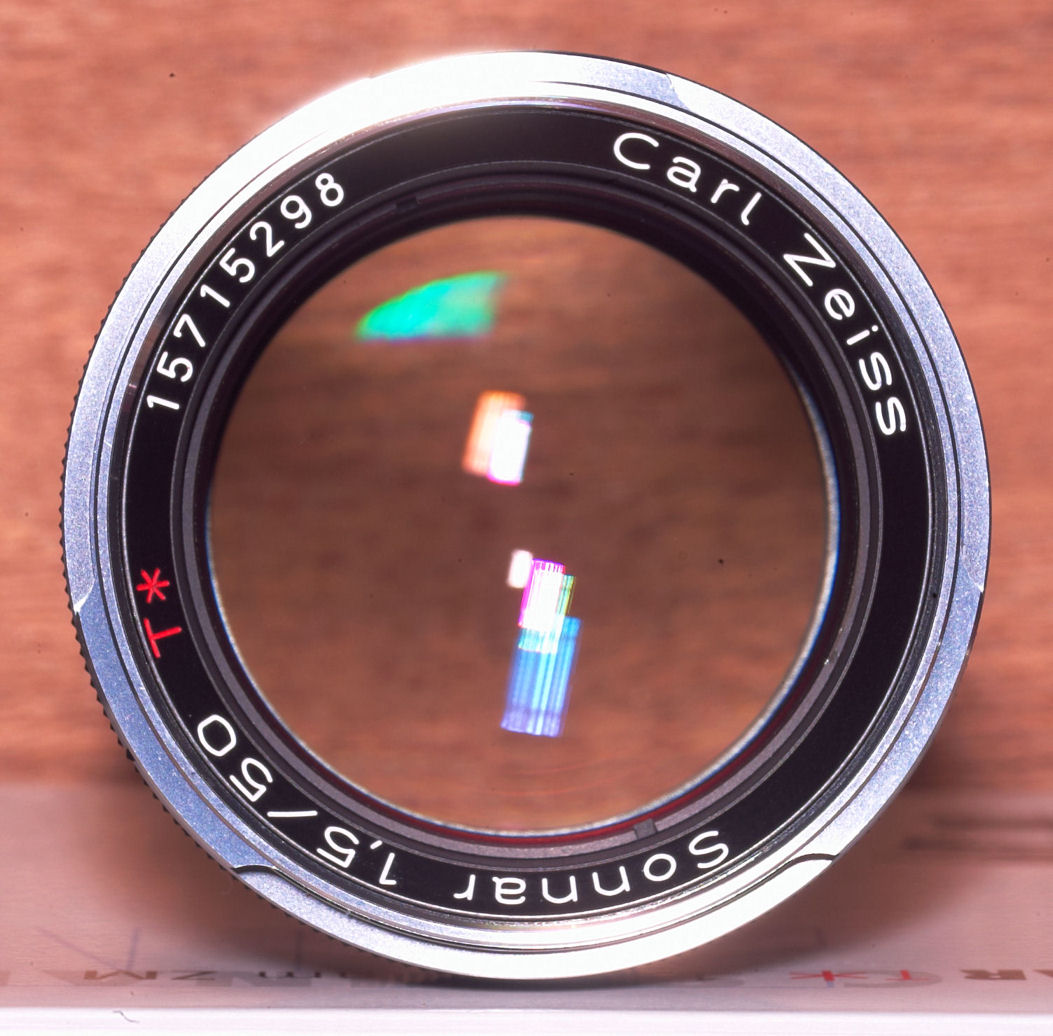
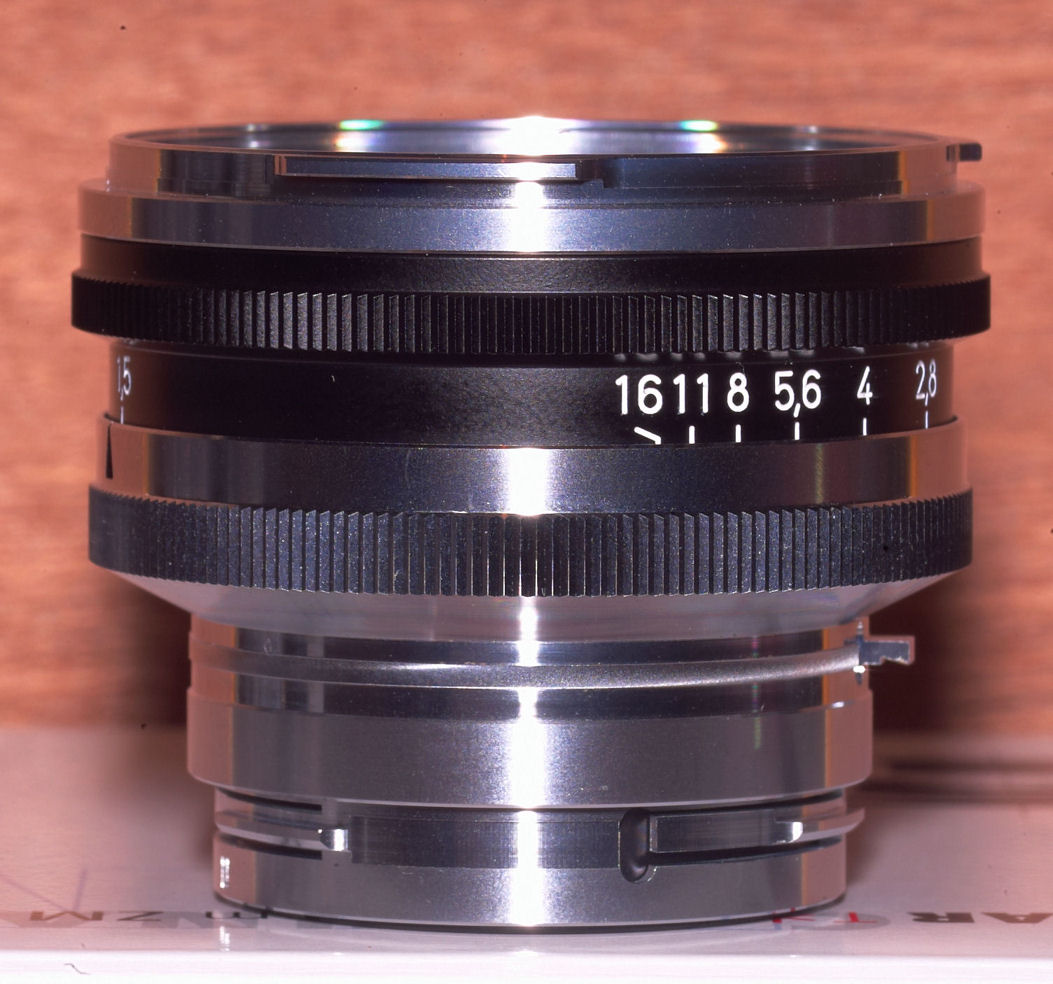
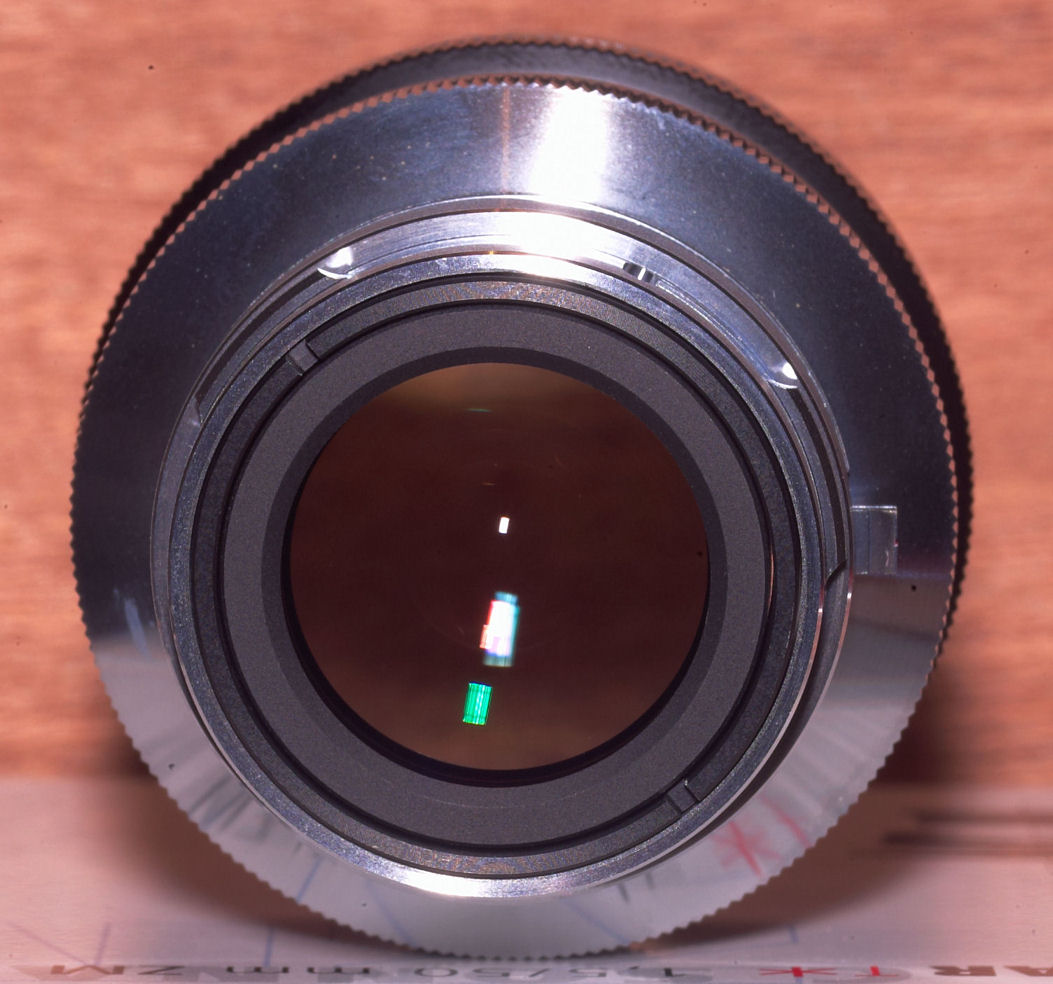
There has been a lot of interest in this new Limited Edition Sonnar 50mm f1.5 lens made by Carl Zeiss. A lot of confusion has been generated because it has been identified to be a Nikon S lens. When Zeiss decided to identify it to be a Nikon S lens it also attached the myths concerning the Nikon S Vs. the Contax focusing helicals and this connection has introduced some very unnecessary confusion. The purpose of this article is to make everything as clear as possible.
If you would like to view the Official Zeiss data sheet for this lens just use this link:
1. The first thing to know about this lens is that it is a Carl Zeiss Sonnar lens, but with vastly superior modern optical glass and coatings. It should be better color corrected, much sharper and have much greater contrast than the Classic Carl Zeiss or Zeiss-Opton 50mm f1.5 T Coated Sonnar, and it does. The only thing to keep in mind is that just like the earlier f.1.5 Sonnar it has ZERO depth of field at f1.5. Like the earlier f1.5 Sonnar it performs best at f2.0 for normal picture taking. Full open is for infinity focus.
2. The second thing to know is that there has been a very big factory mistake. The lens is adjusted at the factory to have sharp infinity focus when mounted on the Contax camera. It needs to be adjusted to have sharp infinity focus when mounted on the Nikon S. I have verified this by mounting samples of this lens on a Contax III and then checking the focus with both the Auto Collimator, the Leitz Infinity Collimator and the ZTS Focus Tester. This lens is definitely factory set for the Contax and not the Nikon camera. These tests are described a little later on.
3. The third thing to know is that Nikon copied the Contax lens mount when it designed the Nikon S camera. The Nikon S mount is the Contax mount. This lens will fit on any Contax prewar or postwar camera. As the following two pictures show the lens fits perfectly on a Contax III.
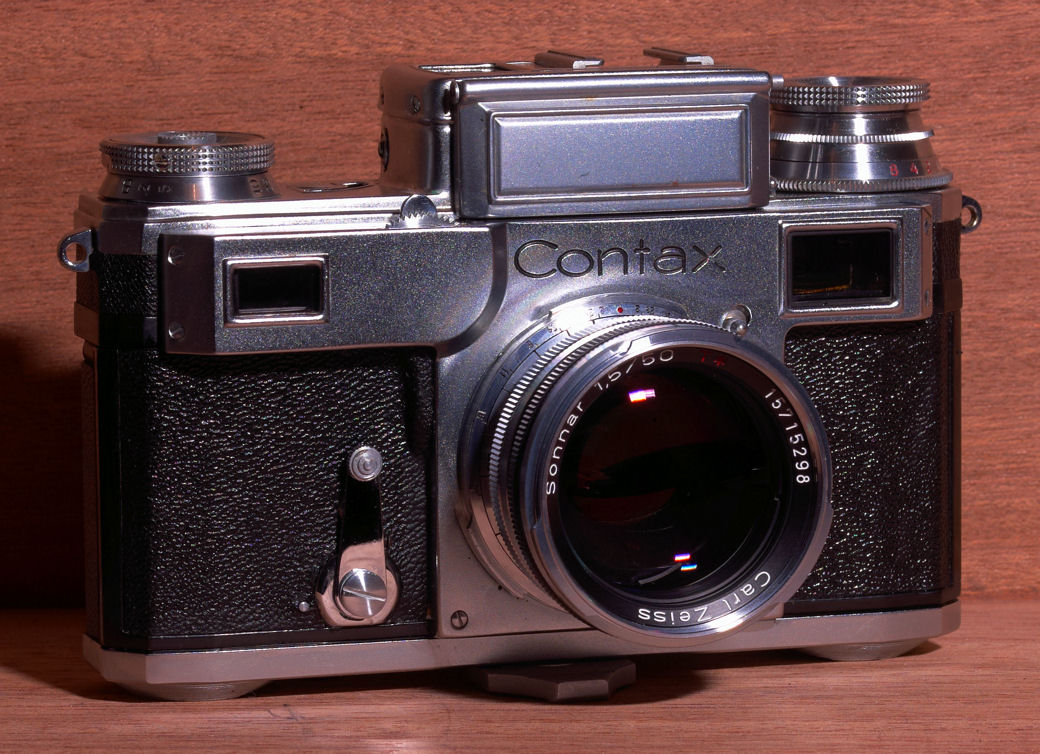
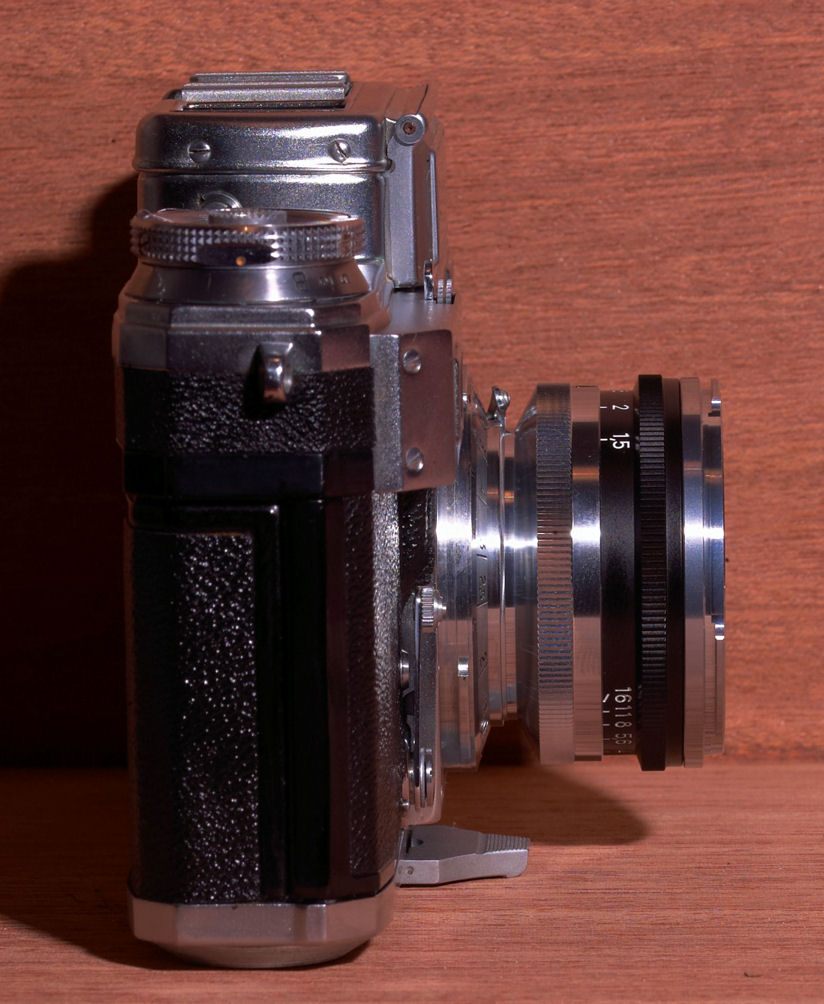
Zeiss has been contacted about this lens by a number of people who have contacted me and all inquiries have resulted in the answer that Zeiss will not provide production data and refers the questioner back to the original press release for this lens. The press release states that the Limited Edition Sonnar ZM 50mm f1.5 Lens will only be produced to advance orders submitted in the last three months of 2007 by Carl Zeiss dealers and that delivery would probably commence in March of 2008.
Zeiss has refused to identify the exact number produced. The most popular estimate circulating on the Internet is about 100 with some as high as 300 which are based upon the subtraction of lens serial numbers. But, Zeiss is using consecutive serial numbers for all of its ZM lens models and so serial number subtraction would not appear to be an accurate method to use to find out just how many of this lens are being made. Zeiss has denied the 100 number and so it could be either more or less than 100; but 100 is probably very close to the actual number produced. My feeling is that in refusing to identify an exact production figure Zeiss is reserving the ability to produce more should a demand develop. They are in the business of making money by making and selling lenses, are not in the collectable business like the Franklin Mint, and so its reasonable to suppose they'll make a lens that makes them money until it stops making them enough money to justify making them. I have to say for myself I wish now they would make a nice sold Contax mount 35mm f2.8 T* Biogon at a reasonable price.
Zeiss has stated that their market research conducted to justify production of this lens indicated the main market would be for the Nikon S Rangefinder camera and that the Contax market would be very small. The reason the Nikon S came out way ahead in the market research is simply that this lens was intended for sale in the Japanese market and so the market research was conducted in Japan only. The Contax is very much rarer in Japan than it is here in the USA. And the number of classic mechanical type film camera lovers is greater there. These two factors make selling this lens in Japan to appear to be an attractive proposition.
If you would like to know more about the differences between the Nikon S and the Contax lens mount you can read my article on this subject. Contax Vs. Nikon S Lens Mounts. The examination of the differences between the lens mounts on these cameras was conducted in response to the appearance of this new lens on the market. The result is that the only practical difference between the Contax and the Nikon S is that the Nikon S body is 0.31 mm thinner than the Contax body. The threads of the focusing helicals are identical on both cameras.
The consequences of the Nikon S camera being 0.31 mm thinner than the Contax is simple depending upon whether a Nikon lens is to be used on a Contax or a Contax lens is to be used on a Nikon:
1. If a lens made for the Nikon S, such as a 1960's Nikkor 50 mm f1.4 is to be used on a Contax it needs to be adjusted to move the lens cartridge deeper into the mount and the amount of this adjustment must be 0.31 mm. This is accomplished by removing spacer washers.
2. If a lens made for the Contax , such as a 1960's Carl Zeiss 50mm f1.5 Sonnar, is to be used on the Nikon, the lens needs to be adjusted so that the lens is moved 0.31mm further out of the mount.
Here is how I have tested this lens to verify it is set for the Contax. In order to make absolutely certain this lens is factory set for the Contax it was exhaustively focus tested:
1. I put two lenses purchased from two different sources on the Contax III camera body, set the focus at infinity and viewed the film plane through the autocollimator. The autocollimator target was sharp.
2. The Contax III was put onto the ZTS Video Focus Testing Machine and the lenses were installed and viewed through the camera sighted at a Leitz Infinity Focus collimator. Both were in sharp focus with the factory thickness of 0.31 of spacer washers.
3. I disassembled the two lenses and removed the spacer washers, reassembled the lenses, reinstalled the lenses on the Contax III and sighted the film plane through the autocollimator. In order to obtain a sharp image on the film plane it was necessary to rotate the focusing helical to obtain a displacement equal to the thickness of the removed spacing washers for both lenses. Then the washers were reinstalled.
If these lenses had been made and set for the Nikon S, then the removal of 0.31 mm of spacer washers would have improved the infinity focus. The focusing behavior observed after the washers were removed is what a Contax lens should exhibit thus demonstrating these lenses are Contax lenses. But, just to make absolutely certain some additional tests were performed.
4. I obtained 0.31mm of spacer washers from one lens and installed them on the other so that it contained 0.62 mm of spacer washers. Then the lens was tested as before and it was out of focus at infinity and could not be brought into infinity focus by operation of the camera focusing helical.
5. The lens with 0.62 mm of spacer washers was retested on the ZTS Focus Tester viewing the Leitz Infinity Collimator. The view was unsharp and could not be made to be sharp by manipulation of the camera focusing helical.
6. The additional washers were removed and both lenses were reassembled with the factory provided 0.31 mm of spacer washers.
There's absolutely no doubt in my mind. There has been a big factory mistake with this lens. It has been set for the Contax and not the NIkon S. The box label is wrong. It's a Contax mount lens made for the Contax body. There is no doubt about it.
This is the reason I took the additional step of removing the spacer washers from the lens and then retesting it two different ways to verify the lens was set for the Contax at the factory. If the lens was set for the Nikon at the factory then removing the spacer washers would have improved the focus but the result was the infinity focus point was moved 0.31 mm away from prime focus. This meant the lens was made for the Contax and not the Nikon.
The only conclusion open to me is that the factory made a big mistake and simply got things backward when they designed the lens mount. Inside the lens mount is a machined ledge. The lens cartridge sets on this ledge and the position of this ledge sets the intrinsic focus of the lens. When the lens mount was designed the ledge position was set for the Contax and not the Nikon. Because the lens contains 0.31 mm of spacer washers it is clear the intention of the designers was to make the lens easily adjustable to be used on the Contax by their removal. But in setting the inner ledge position 0.31 mm too low the lens became intrinsically a Contax lens.
I believe this lens is a not going to be produced again and that all that are on the market now are all that are ever going to be available. Zeiss could certainly make more, but in so doing they would either have to identify the lens to be a Contax lens, or they would have to correct their mistake and change the design to make it a Nikon lens. In any event a big mistake would have to be admitted with the result these first lenses would become extremely collectable on that basis alone.
Here is how the lens comes packaged. It includes a special lens hood along with front and rear lens caps. The hood fits on the outer bayonet of the lens allowing for the use of both filters and the hood at the same time.
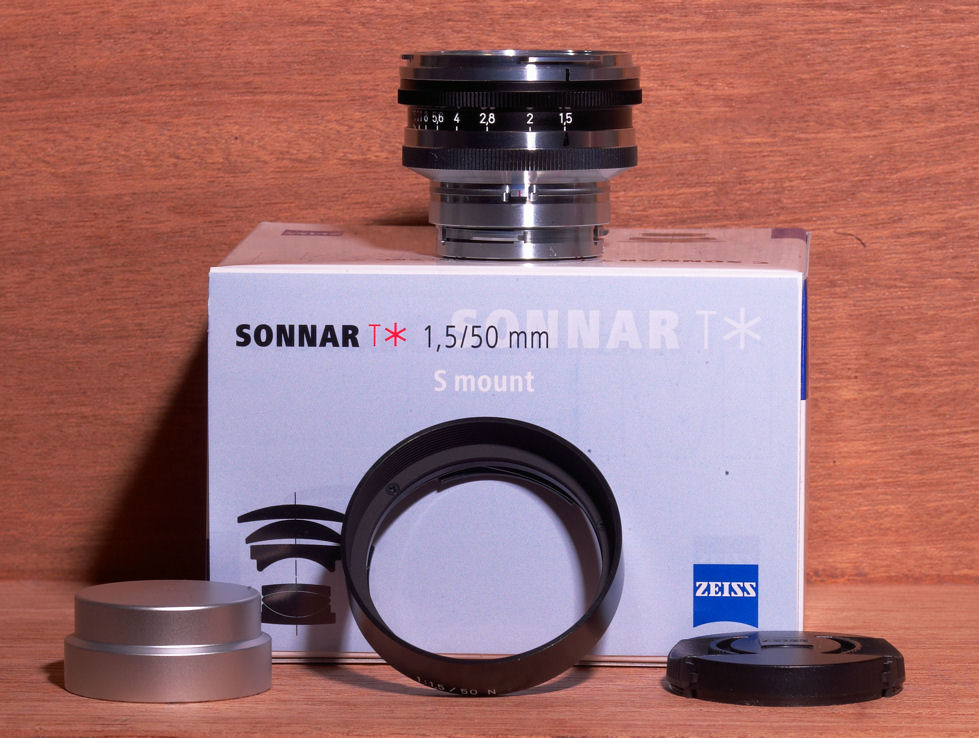
If you look at the bottom left of the box you can see the lens element construction for this lens. It differs from that of the 1932 to 1964 50mm f1.5 Sonnar construction in that there are two center elements instead of a single cemented triplet. The two center elements in this lens are identical to the top and bottom elements of the cemented triplet of the older lens. My experience with separating and recementing these triplets convinces me that the purpose of the center element in the old lens triplet was to act as a filler between the two top and bottom elements. With this center filler element two air refractive surfaces would be removed from the lens. In the days of old optical glass and much less efficient coatings the use of this center triplet to eliminate two air surfaces made a lot of sense. But with modern high refractive ultra low dispersion optical glass and vastly improved coatings it's not necessary. You can see that the elimination of cemented elements was carried even further in the recently introduced ($2,800.00) ZM 85mm f 2.0 T* Sonnar.
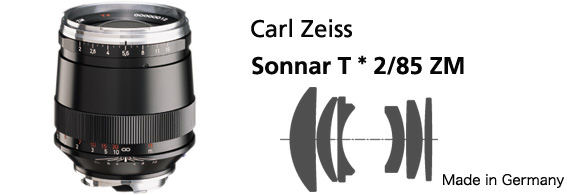
In this new lens you can see the center element is now a two piece non-cemented group in the same manner as in the new 1.5 Sonnar, but that the rear three elements are also not cemented. I can only speculate that this kind of lens construction can only result from continued improvements in optical glass and anti-reflection coating technology which have not yet been officially announced.
Basically the new 1.5 Sonnar T* lens is functionally identical to the old Sonnar except that its color rendition, flare resistance, contrast, and evenness of illumination will be vastly improved. But this lens has one thing that no other lens has ever had and it is a very special thing. This lens has adjustable perfect Bokeh. I haven't counted the iris blades, but there are enough of them so the aperture hole is nicely round and very circular. The nature of the total lack of depth of field when this lens is open at f 1.5 differs from the old Sonnar. In the old Sonnar the lens was simply out of focus for subjects as much as an inch or two outside of the focal plane when opened a f1.5. With this lens the lens has tremendous Bokeh at f 1.5 and this diminishes greatly at f2.0 and is completely removed by f 5.6. Because of this the lens is a very fine hybrid having adjustable behavior between that of the classic Protar and a modern Sonnar between apertures of 1.5 and 5.6. Where at f 1.5 it's a pure Protar and at f 5.6 it's a pure Sonnar. This makes its possibilities for the very mature artist who knows his lenses almost endless. I believe this adjustable Bokeh behavior is an unintended consequence of removing the center element of the central triplet. This removal introduces an artifact of Protar design which was not present previously in any other lens up until now.
Here's a hand held picture taken by one of these wonderful new ZM lenses in the past few days. It was taken in Australia of the spines of a cactus using the very same Contax III shown in the pictures above. The film used was Kodak Gold and it was metered with the restored meter on the camera. The shutter speed was 1/1250 and the aperture was f 1.5. In the background you can clearly see the wonderful almost 3-D Bokeh this remarkable lens produces. The sharpness of the spikes speaks for itself as does also the wonderful gradation of green and shadow in the body of the cactus.

If you would like to purchase one of these lenses for your Contax please contact me using this email link: Mail to Henry Scherer. There are only a very few available for sale. Also, if you would like to have your lens custom adjusted to have the most exact possible focus with your camera you can send you camera body here and your lens will be custom adjusted to it on the autocollimator at no additional cost with no wait. Even the most modern lenses vary slightly and so its normal for a lens to require a very small adjustment to bring it into perfect focus. If you don't send your camera here your lens will be adjusted on my test camera and will be shimmed appropriately prior to being shipped to you.
The Big Nikon S Camera Body Problem
The Nikon S Camera had a big problem when it was made and I believe to a much lesser extent it still has the same problem today. The camera body itself is very fine and shows very high quality of workmanship and materials. It is a Contax-Leica-Retina knock off design that has the Contax lens mount, the Leica shutter and rangefinder actuator, and the Retina design rangefinder. The problem is with the leather.
There are a number of ways to tan animal skins to make it into leather. Today there are two main methods used industrially: These are the Vegetable and Chromic Acid methods. In vegetable tanning the skin is prepared by the removal of fat and hair and then it is treated in baths of various natural vegetable and bark extracts. This process can take from weeks to months to complete. In the chromic acid method the skin is prepared and then put into a bath of chromic acid. The chromic acid allows for the skin to be tanned in about a day. Today it is usual with the chromic acid method to follow the chromic acid bath with rinses and a special neutralizing bath and then a final vegetable bath. This extra processing removes all the chromic acid and extends the lifetime and suppleness of the leather.
Vegetable tanned leather is the best. It can easily last for many many years. It's also completely non-toxic and absolutely neutral to the human immune system. Chromic acid tanned leather doesn't last long. It tends to harden, become brittle and for its surface to flake. Chromic acid is one of the most powerful sensitizers. A sensitizer is a chemical that makes humans allergic to it and the more contact the stronger the allergy. Chromic acid is today known to be a very powerful sensitizer and also the second most powerful carcinogen known causing lung and sinus cancer. Today chromic acid tanned leathers are very carefully rinsed and treated to neutralize the chromic acid. But this was not done with the leather used on the Nikon S.
Zeiss used the highest quality skins tanned by the highest quality vegetable tanning process on the Contax from the Contax I until the final Contax IIa production runs where it changed to the same shellac based leatherette used on the Contarex. Nikon used brutally chromic acid tanned leather on the Nikon S. I say brutally chromic acid tanned because the tanning method use is uniquely bad; and not only this it is toxic to people who were unfortunate enough to touch it.
The leather used on the Nikon S was tanned with chromic acid and then it was not rinsed or neutralized but was left totally saturated with chromic acid. This left this leather totally toxic to all known forms of life. Not only this it was a powerful sensitizer rendering anyone who used the Nikon S camera to be permanently rendered to be extremely allergic to chromium acid for the remainder of their life. The result of this sensitization was asthma caused whenever the camera was touched or brought close to the face. I also believe this leather also caused a fair number of fatal sinus cancers.
If you examine the leather on a Nikon S camera body today carefully you will notice it is dark green and that it is very brittle and flakey. This green is the color of chromic acid after it has had a very very long time to become oxidized into a pigment known as chromium green. I'm certain that when the Nikon S leather was brand new it had a very profound reddish blonde color which is the color of fresh chromic acid and coincidentally also the color of high quality vegetable tanned leather. The dark green color of the Nikon S leather today is so very dark green my belief is that the leather was removed from a very high concentration bath of chromic acid and then left to dry and was not rinsed or neutralized thereafter.
Chromium acid does not oxidize quickly in the air. It takes many years. Because the leather is over painted with black paint the inner color change has not been noticed. But there can be no doubt that the leather on the NIkon S was a powerful sensitizer and carcinogen to anyone who regularly handled the camera for at least thirty if not more years after it was made, if not up until the present time. Only a professional analysis of properly collected representative samples of Nikon S body leather could provide a valid measurement of the level of chromic acid in the Nikon S body leather today. All I can say is that I would not use one or handle it much even today.
You may ask, how can I know that the Nikon S leather was left saturated with chromic acid and not converted deliberately to chrome green during the tanning process? The answer is the glue used to attach the leather to the camera. Nikon used hide glue which is normally water soluble, unless it is tanned. When hide glue becomes tanned it becomes insoluble to water or any other solvent. The glue on the Nikon S is tanned. This means the leather had plenty of chromic acid in it when it was attached to the camera.
If you would like to know more about the extraordinary toxicity of chromic acid and how the U.S. Navy intentionally exposed thousands of innocent victims to it check out this web site: Chromic Acid Murder.
